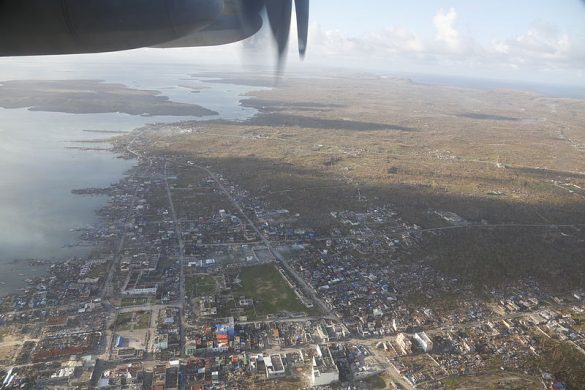5. april 2016
Læsetid: 2 min
Det fremgår af en pressemeddelelse fra Grantham Research Institute of Climate Change:
An average of US$2.5 trillion, or 1.8 per cent, of the world’s financial assets would be at risk from the impacts of climate change if global mean surface temperature rises by 2.5°C (4.5°F) above its pre-industrial level by 2100, according to a new paper by researchers at the Grantham Research Institute on Climate Change and the Environment at the London School of Economics and Political Science and Vivid Economics, which is published today (4 April 2016) in the journal ‘Nature Climate Change’.
However, the authors, Simon Dietz, Alex Bowen, Charlie Dixon and Philip Gradwell, found that uncertainties in estimating the ‘climate Value at Risk’ mean that there is a 1 per cent chance that warming of 2.5°C could threaten US$24 trillion, or 16.9 per cent, of global financial assets in 2100. The authors point out that these sums are larger than the estimates of US$5 trillion for the total stock market capitalisation of fossil fuel companies today.
Reducing warming limits risk
Limiting warming to 2°C (3.6°F) in 2100 would significantly reduce the ‘climate Value at Risk’, the researchers found. The average value of global financial assets at risk would be US$1.7 trillion, with 1 per cent chance of US$13.2 trillion being at risk.
The lead author on the paper, Professor Simon Dietz, said: “Our results may surprise investors, but they will not surprise many economists working on climate change because economic models have over the past few years been generating increasingly pessimistic estimates of the impacts of global warming on future economic growth. But we also found that cutting greenhouse gases to limit global warming to no more than 2°C substantially reduces the climate Value at Risk, particularly the tail risk of big losses.”
The authors discovered that even when they factored in the costs of reducing greenhouse gas emissions to limit warming to 2°C, the average value of global financial assets would be US$315 billion, or 0.2 percentage points, higher than if warming of 2.5°C by 2100 occurred along a ‘business as usual’ pathway for global emissions.
Climate value
Professor Dietz said: “When we take into account the financial impacts of efforts to cut emissions, we still find the expected value of financial assets is higher in a world that limits warming to 2°C. This means risk-neutral investors would choose to cut emissions, and risk-averse investors would be even more keen to do so.”
He added: “Our research illustrates the risks of climate change to investment returns in the long run and shows why it should be an important issue for all long-term investors, such as pension funds, as well as financial regulators concerned about the potential for asset-price corrections due to an awareness of climate risks.”
Professor Dietz also drew attention to the uncertainties in estimating the climate Value at Risk. He said: “Although we are the first to produce a comprehensive estimate of the climate Value at Risk using an economic model, it is important to remember there are huge uncertainties and difficulties in performing economic modelling of climate change, so this should be seen as the first word on the topic, not the last.”

